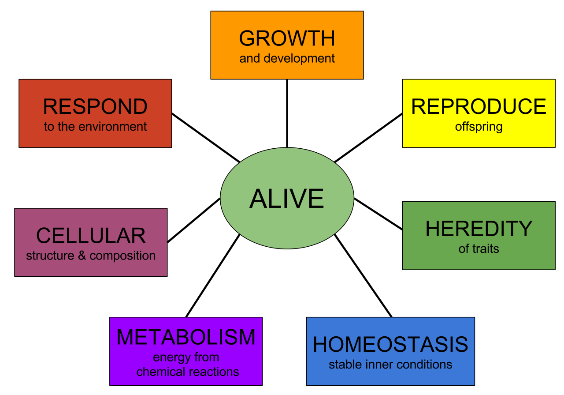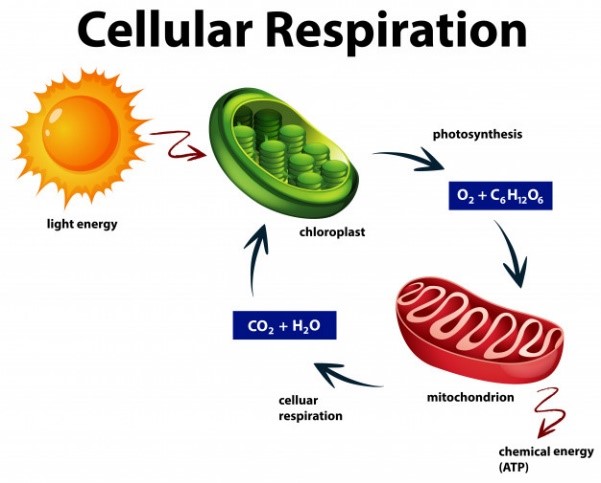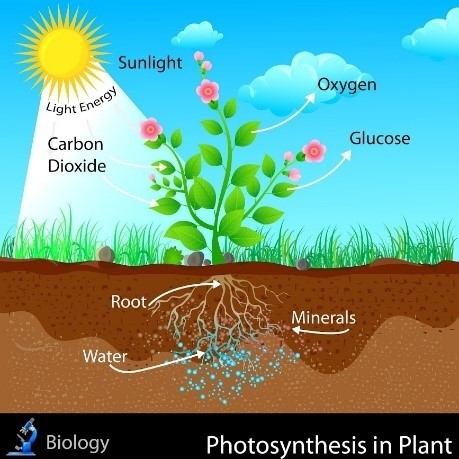How do Living Organisms Get Energy?
Grade 6 Science Worksheets

Every Breath You Take …
Every cell carries out several important functions to stay alive. (See: Parts of a Cell). These functions are possible because the cell obtains energy to do so. Energy is being continuously obtained through chemical reactions to keep the cell and the entire organism alive and healthy. These chemical reactions that take place in a cell are called the cell’s Metabolism. Where does it get the energy to do so? A cell requires food just as you and I do. How does it obtain this food and how does it convert food to energy? Through a process called Respiration.
Schedule a Free session to clear worksheet doubts
No credit card required, no obligation to purchase.
Just schedule a FREE Sessions to meet a tutor and get help on any topic you want!
Respiration
Respiration is the process by which all living organisms obtain and use oxygen. Almost all living organisms require oxygen to live. A plant or animal takes in oxygen from its environment and releases carbon dioxide. In animals, oxygen is then carried in the blood by the circulatory system to each and every cell of its body. Inside the cells, oxygen is used in chemical reactions to release energy and produce carbon dioxide and water as waste products. This is called cellular respiration. The carbon dioxide released is carried back to the lungs in the blood which is breathed out by the organism.
Let us look at cellular respiration in some more detail.
Cellular Respiration
A series of chemical reactions take place within a cell in the presence of oxygen. These reactions release energy from food substances obtained by the cell and make it available for various cell functions.
Mitochondriapresent in the cytoplasm of the cell is responsible for cellular respiration. They are the power producers of the cell. Cells obtain food from all that living organisms eat – typically carbohydrates, proteins, and fats. This food is converted into glucose and burned in the presence of oxygen inside the mitochondria to generate energy. The only form of energy a cell can use is a molecule called ATP (adenosine triphosphate). These chemical compounds run the cell’s activities. They help to make proteins in the cell, to make a muscle cell contract, or to make a nerve cell send a message, and so on. Cells requiring more energy have more mitochondria, such as the heart, liver or muscle cells.

Personalized Online Tutoring from eTutorWorld
eTutorWorld offers affordable one-on-one live tutoring over the web for Grades K-12, Test Prep help for Standardized tests like SCAT, CogAT, MAP, SSAT, SAT, ACT, ISEE and AP. You may schedule online tutoring lessons at your personal scheduled times, all with a Money-Back Guarantee. The first one-on-one online tutoring lesson is always FREE, no purchase obligation, no credit card required.
For answers/solutions to any question or to learn concepts, take a FREE TRIAL Session.
No credit card required, no obligation to purchase.
Just schedule a FREE Sessions to meet a tutor and get help on any topic you want!

Plant Respiration
Respiration in plants occurs through the process of Photosynthesis – using energy from sunlight to combine carbon dioxide and water to make food. Plant leaves contain a pigment called Chlorophyllwhich is essential in the process of photosynthesis to produce vital sugars. These sugars are stored in the form of food in special organelles called Chloroplastsfound inside plant cells. These sugars, combined with other nutrients from the soil, such as nitrogen, sulfur, phosphorus, help plants make starch, fat, protein, vitamins, and other complex compounds essential for life. Photosynthesis provides the chemical energy needed to produce these compounds.

Check Point
- A cell converts food to energy through a process called ______.
- The part of respiration taking place inside a cell is known as ______.
- Organelles named ______ in the cytoplasm of a cell are responsible for cellular respiration.
- A pigment called ______ is essential in the process of photosynthesis to produce vital sugars.
- Plant respiration occurs through the process of ______.
Answer Key
- Respiration
- Cellular
- Mitochondria
- Chlorophyll
- Photosynthesis
Schedule a Free session to clear worksheet doubts
No credit card required, no obligation to purchase.
Just schedule a FREE Sessions to meet a tutor and get help on any topic you want!
Learn more about Scientific Method and other important topics with 7th Grade Science Tutoring at eTutorWorld. Our expert science tutors break down the topics through interactive one-to-one sessions. We also offer the advantage of customized lesson plans, flexible schedules and convenience of learning from home.
Pricing for Online Tutoring
| Tutoring Package | Validity | Grade (1-12), College |
|---|---|---|
| 5 sessions | 1 Month | $124 |
| 1 session | 1 Month | $25 |
| 10 sessions | 3 months | $239 |
| 15 sessions | 3 months | $354 |
| 20 sessions | 4 months | $449 |
| 50 sessions | 6 months | $1049 |
| 100 sessions | 12 months | $2049 |
6th Grade Free Worksheets
- Inquiry process
- Nature of Science
- Scientific Inquiry
- Inquiry, Analysis and Problem Solving
- Ethical Practices
- Science and Society
- Biotic and Abiotic Factors
- Impact of Organisms
- Adaptation
- Spheres of Earth
- Natural Resources
- Environmental Issues
- Conservation of Earth
- Understanding Technology
- Abilities To Do Technological Design
- Structure of Earth
- Solar System
- Rocks and Fossils
- Earth Systems
- Plate Tectonics
- Evolution
- Magnetic Field of Earth
- Geologic Time
- Materials and Processes That Shape a Planet
- Astronomy
- Ecology
- Energy
- Kinetic and Potential Energy
- Energy Transfer
- Matter and its Structure
- States of Matter
- Physical and Chemical Changes
- Force and Motion
- Electricity and Magnetism
- Wave Interactions
- Sound
- Light
- Introduction to Life Science
- The Origin & History of Life On Earth
- Plant and Animal Cells
- Parts of a Cell
- The Cell Cycle
- How Living Organisms Get Energy
- Classification of Organisms
- How Plants Grow & Reproduce
- The Human Respiratory System
- The Human Cardiovascular System
- The Human Digestive System
- The Human Endocrine Systems
- The Human Nervous System
- The Human Muscular System
- The Human Skeletal System
Images Credit:
https://upload.wikimedia.org/wikipedia/commons/thumb/5/5a/Characteristics_of_life.svg/768px-Characteristics_of_life.svg.png
https://image.freepik.com/free-vector/diagram-showing-cellular-respiration_1308-8375.jpg
https://lh3.googleusercontent.com/pw/ACtC-3cTyPD0rfwhCLGgxjHO5v0yDnAO2WhZ40__KeeeXziabxxh1psfh1EZv7Wxbd-VxgJaVPCYiuze8RmQtzrCCEEUZaTp7_FCsUoe9PPD-4z141RYlxuh_eLuFklOSYJiQLyL_-MkxmLeNCtxKTIugvEE=s867-no


